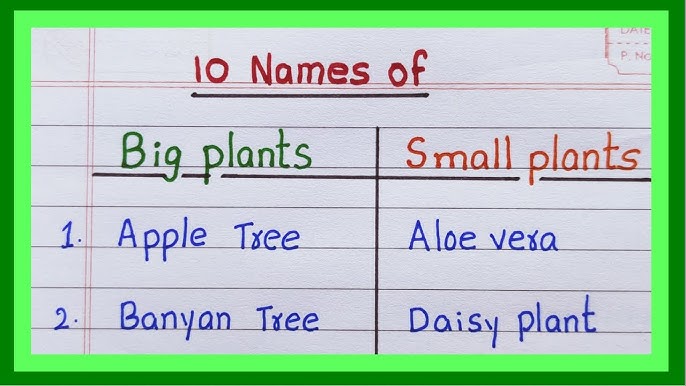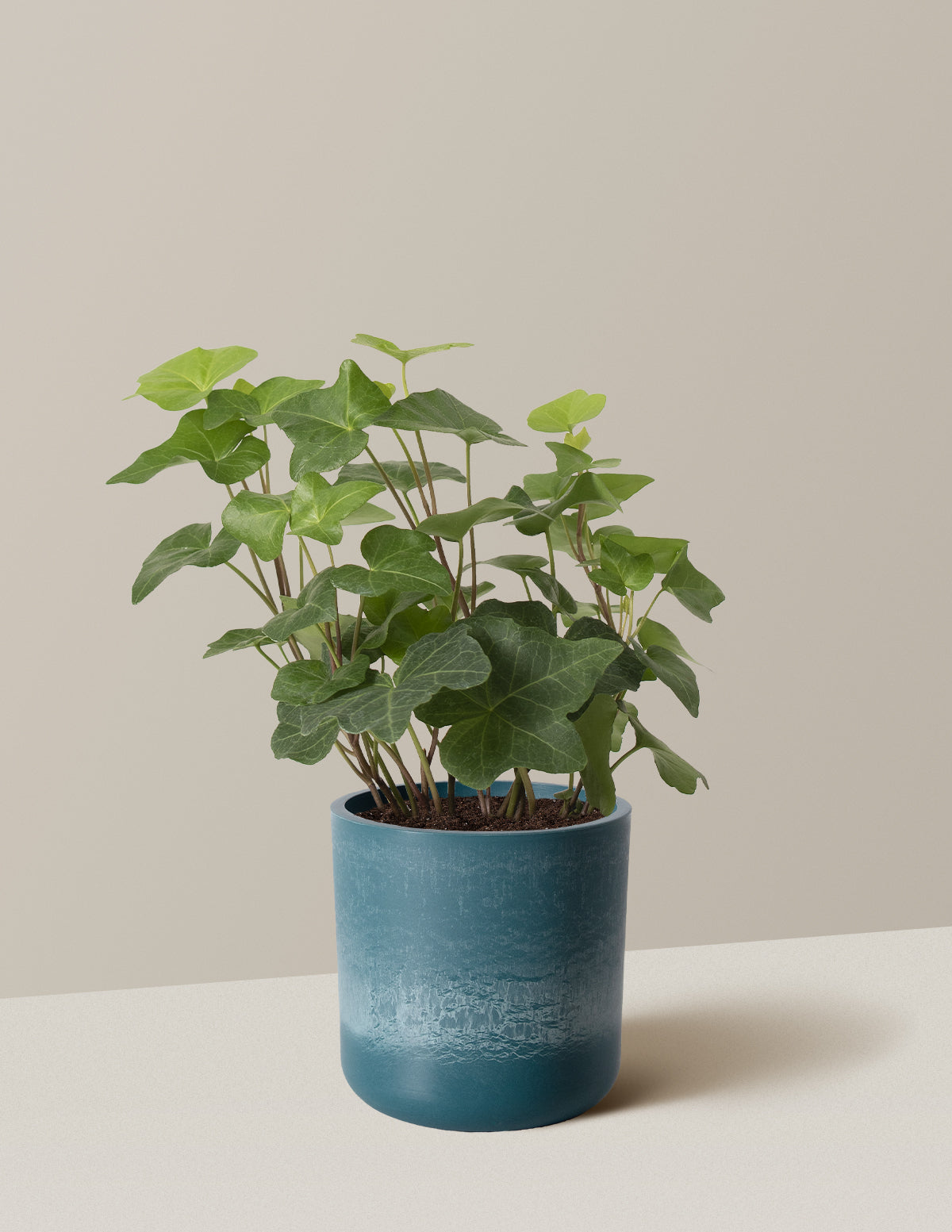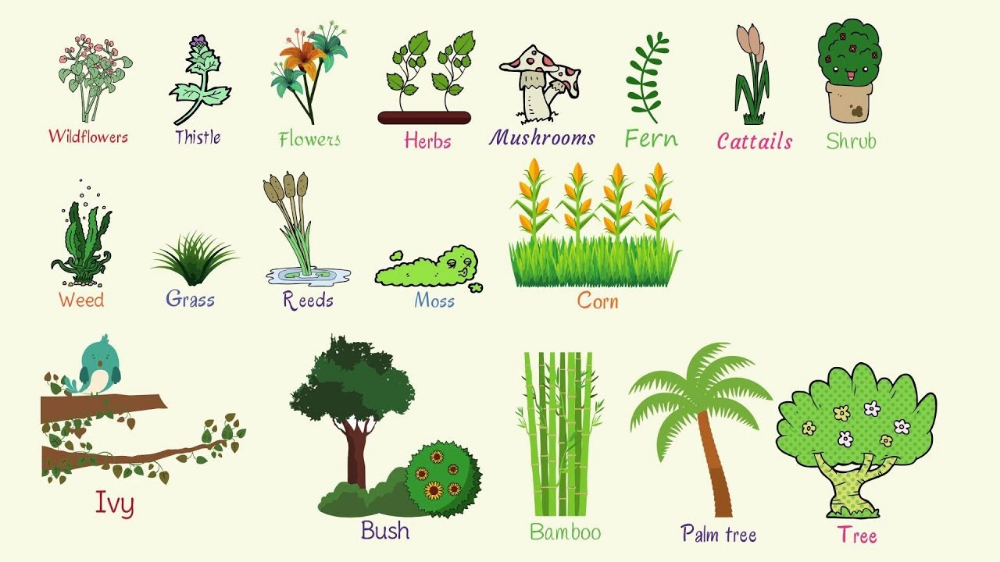Small plants bring life to spaces. They are easy to care for.
Perfect for homes and offices, these plants fit anywhere. Their size makes them ideal for small spaces, adding greenery and charm without overwhelming. Whether you want a splash of color or a touch of nature, small plants are a great choice.
They brighten up any room and can even improve air quality. From succulents to tiny ferns, there are countless varieties to explore. These plants are not only beautiful but also offer a sense of calm and relaxation. Dive into the world of small plants to discover how they can enhance your living or working environment. Their beauty and simplicity make them an excellent addition to any setting.
Benefits Of Indoor Plants
Indoor plants offer a range of benefits that can enhance your living space. They bring a touch of nature inside, making any room more inviting. Beyond aesthetics, these small green companions have practical advantages.
Enhancing Air Quality
Indoor plants improve air quality by absorbing toxins and releasing oxygen. They act as natural air purifiers, removing harmful substances. Studies show plants like spider plants filter pollutants effectively. Cleaner air can lead to better health and fewer allergies.
Boosting Mood And Productivity
Having plants indoors can boost mood and increase productivity. Greenery creates a calming environment, reducing stress levels. Research suggests that people feel happier around plants. Improved mood leads to better focus and efficiency at work or study.

Credit: www.eslactivity.org
Choosing The Right Small Plants
Choosing small plants requires attention to size and care needs. Consider sunlight exposure and water requirements. Ideal for limited spaces, these plants enhance beauty without overwhelming.
Choosing the right small plants can transform a space. They add charm and life. But not all small plants suit every environment. Factors like light, maintenance, and space matter. Picking wisely ensures your plants thrive and beautify your home. ###Low Maintenance Options
Some small plants need minimal care. Perfect for busy lifestyles. Succulents are a top choice. They store water in their leaves. Water them sparingly. Cacti are another great option. They love sunlight and dry conditions. Peace lilies are low maintenance too. They tolerate low light and need little water. Choose these for easy upkeep. ###Plants For Low Light Conditions
Not all homes have bright light. Some plants thrive in low light. Snake plants are ideal. They endure low light and neglect. Pothos plants are versatile. They adapt to various conditions. ZZ plants are another choice. They need little light and water. Perfect for dim corners.Essential Care Tips
Small plants add charm to any space. They require specific care to thrive. Knowing the essentials can ensure their healthy growth.
These plants have unique needs. Understanding them helps maintain their beauty.
Watering Guidelines
Water is vital for small plants. Avoid overwatering; it causes root rot. Check the soil moisture before watering. Let the top inch dry out between waterings.
Consider the plant type. Some need frequent watering; others do not. Use a pot with drainage holes. Excess water should escape easily.
Fertilization Basics
Fertilizers provide nutrients for growth. Choose a balanced, water-soluble fertilizer. Apply it during the growing season.
Follow instructions on the package. Over-fertilizing can harm the plant. Dilute the fertilizer solution to avoid damage.
Regular feeding keeps plants vibrant. Ensure the soil is nutrient-rich.
Potting And Repotting
Small plants thrive when given the right attention. Potting involves selecting suitable soil and containers for healthy growth. Repotting helps refresh the soil and allows roots to expand, promoting vibrant and flourishing plants.
Potting and repotting small plants is a crucial part of plant care that can significantly impact their growth and health. Whether you’re a seasoned gardener or a beginner, understanding these processes can ensure your plants thrive. It’s a rewarding experience to watch your plants grow, but it requires knowing when and how to provide them with more space.Selecting The Right Pot
Choosing the right pot is more important than you might think. The pot needs to be the correct size, not too big or too small. A pot that’s too big can lead to overwatering, while one that’s too small can stunt growth. Consider the material of the pot as well. Clay pots are porous and allow air and moisture to move through the walls, which can be beneficial for plants that prefer dryer conditions. Plastic pots retain moisture longer, making them ideal for plants that need more water. Think about aesthetics too. Your pot should complement the plant and fit well within your home decor. A stylish pot can enhance the plant’s beauty and add to the overall ambiance of your space.Signs Your Plant Needs Repotting
How do you know when it’s time to repot your plant? Look for roots coming out of the drainage holes. This is a sign that your plant is root-bound and needs more space to grow. If your plant’s growth has slowed or stopped, it might be craving more room. Plants that seem top-heavy or frequently topple over could benefit from a larger pot. Notice if the soil dries out quickly after watering. This could mean your plant has outgrown its pot, and the soil volume isn’t enough to retain moisture. Repotting can be a daunting task, but it’s a chance to give your plant a fresh start. Have you ever wondered if your plant could be happier with more room to stretch its roots? Take the leap and see the difference it makes!Decorative Plant Arrangements
Small plants bring a touch of nature into any space. They fit perfectly on desks, shelves, or windowsills. These plants add beauty without taking up much room, making them ideal for decorative arrangements in homes or offices.
Decorative plant arrangements can transform any space into a lively and inviting environment. Small plants are perfect for creating beautiful indoor displays that bring a touch of nature into your home. Whether you have a small apartment or a large house, there are countless ways to creatively arrange plants that reflect your style and enhance your living area. ###Creating A Mini Indoor Garden
A mini indoor garden can be your personal oasis, even if you live in a bustling city. Select a variety of small plants that thrive indoors, such as succulents, ferns, or pothos. These plants require minimal maintenance, making them perfect for busy lifestyles. Arrange your plants in a way that pleases the eye. Consider using shelves, window sills, or corner stands to display them. Mix different textures and heights to create visual interest. Have you ever noticed how a touch of greenery can change the mood of a room? Think about adding decorative pots or containers. Colorful or uniquely shaped pots can add an extra layer of charm to your mini garden. You can even use recycled materials like glass jars or tin cans for a rustic look. The key is to let your creativity shine. ###Using Plants As Room Dividers
Plants can serve as natural room dividers, giving your space a fresh and airy feel. Instead of traditional partitions, why not use tall plants like snake plants or bamboo? These can create a soft barrier between different areas of a room without blocking light. Arranging small plants on a bookshelf or a series of hanging planters can also define spaces. This method is especially useful in open-plan living areas where you want to create distinct zones. It provides privacy while maintaining an open feel. Another idea is to use a plant stand with multiple levels. This not only acts as a divider but also as a showcase for your plant collection. It’s a conversation starter that guests will admire. What better way to personalize your home than with a living, breathing partition?
Credit: www.youtube.com
Common Pests And Solutions
Small plants bring life and beauty to any space. But pests can spoil this. Understanding common pests and their solutions is key. This ensures your plants thrive and remain healthy.
Identifying Common Pests
Small plants often attract various pests. Aphids, tiny and green, suck plant juices. Spider mites weave webs and cause leaves to yellow. Whiteflies are small, white insects that fly when disturbed. Fungus gnats look like small black flies and swarm around soil. Recognizing these pests is the first step in dealing with them.
Natural Pest Control Methods
Use natural methods to control pests effectively. Neem oil works well against aphids and spider mites. It disrupts their life cycle. Introduce ladybugs to eat aphids naturally. They are effective and safe for plants. Yellow sticky traps catch whiteflies and fungus gnats. These traps reduce pest populations without chemicals. Spray plants with soapy water to deter pests. It suffocates small insects quickly.
Incorporating Plants Into Decor
Plants can transform any space, offering a touch of nature and tranquility. Integrating small plants into your decor is a fantastic way to breathe life into your home. Whether you have a minimalist apartment or a cozy cottage, there’s a plant that can complement your style beautifully.
Matching Plants With Interior Styles
Think about the vibe you want in your living space. Are you going for a modern, sleek look? Consider small succulents or air plants. Their clean lines and low maintenance make them perfect for contemporary settings.
If your home has a rustic charm, opt for potted herbs like rosemary or thyme. They not only add a touch of green but can be used in cooking too. Their earthy aesthetic fits perfectly with wooden and natural decor.
For eclectic or bohemian spaces, try hanging plants like ivy or trailing philodendrons. They can cascade down shelves or hang from the ceiling, adding depth and interest. These plants love a bit of personality!
Using Plants To Highlight Spaces
Small plants are excellent for drawing attention to specific areas. Imagine a bright fern on a windowsill—it invites your gaze outdoors. A cluster of tiny cacti on a coffee table sparks conversation.
Place a vibrant orchid in your entryway to greet guests with color and elegance. Or, position a snake plant in the corner of your bedroom for a calming presence. These choices can subtly shift the focus and mood of a room.
Think about where you spend most of your time. Could a plant enhance that area? Maybe a pothos in your home office to inspire creativity, or a lavender pot in your bathroom for relaxation. What will you choose to highlight?
Integrating small plants into your decor is more than just an aesthetic choice; it’s about creating an environment that feels alive and inviting. How will you let nature into your home today?

Credit: www.thesill.com
Benefits Of Plant Variety
Small plants bring joy and freshness to any space. Choosing a variety of plants enhances this experience. Different plants offer unique benefits. They can change the look and feel of your home.
Mixing plants of different types creates a lively atmosphere. It adds depth and interest. Variety in plants also boosts your mood. It makes your space inviting and pleasant.
Mixing Different Textures
Plants come with varied textures. Some have smooth leaves. Others have rough or fuzzy surfaces. Mixing these textures is fun. It gives your space a dynamic look.
Imagine a cactus beside a fern. The contrast is striking. It keeps your eyes engaged. Texture variety makes plant displays exciting. It adds a layer of visual interest.
Combining Colors For Impact
Colors play a vital role in plant variety. Green is calming and common. Yet, combining other colors can make a big impact.
Consider adding plants with red or purple leaves. They catch attention. Bright flowers also add a splash of color. This mix can change a dull corner into a vibrant spot.
Frequently Asked Questions
What Are Small Plants Called In English?
Small plants are commonly referred to as “shrubs,” “bushes,” or “herbs” in English. They typically grow close to the ground and are an essential part of gardens and ecosystems. These plants vary in size, texture, and color, contributing to biodiversity and natural beauty.
What Are Miniature Plants Called?
Miniature plants are often called “dwarf plants” or “bonsai. ” These plants are small, ideal for compact spaces. Bonsai is a Japanese art form, cultivating trees in small containers. Dwarf plants naturally grow smaller, perfect for indoor gardening. These plants offer beauty and tranquility in limited spaces.
What Are The 5 Smallest Plants In The World?
Wolffia, or watermeal, is the smallest flowering plant. Duckweed is another tiny plant species. Algae include minute species like Chlorella. Liverworts, especially Riccia, are small non-vascular plants. Mosses such as Micromitrium are also among the smallest plants. These plants thrive in diverse environments worldwide.
What Is The Name Of 10 Plants?
Here are the names of 10 plants: Rose, Tulip, Sunflower, Orchid, Lavender, Bamboo, Fern, Aloe Vera, Cactus, Basil.
Conclusion
Small plants bring life and color to any space. They are easy to care for and fit perfectly in small areas. From the kitchen windowsill to the office desk, these plants brighten up corners. Their compact size makes them ideal for beginners.
No need for a big garden or lots of space. Just a little sunlight and water. They also improve air quality, adding health benefits. Discover the joy of nurturing these tiny wonders. Enjoy the simple pleasure of watching them grow.
Invite nature into your home with these charming small plants. A little green goes a long way!





